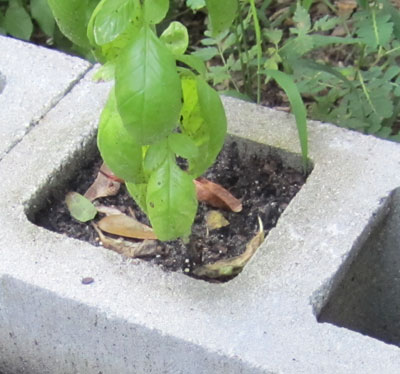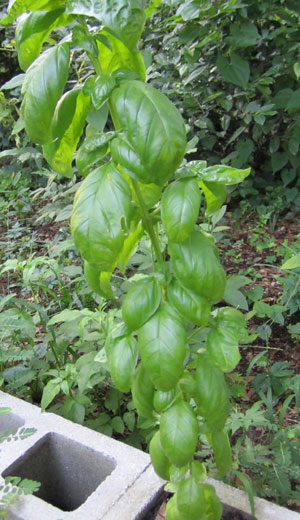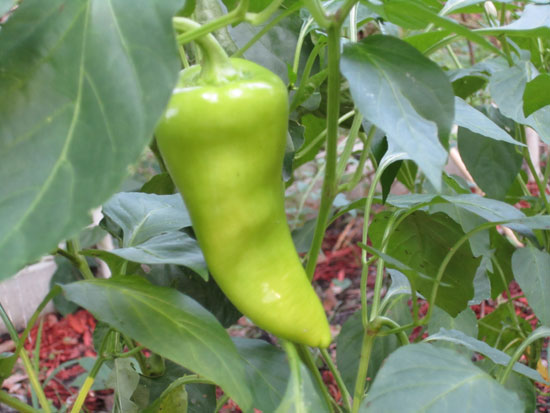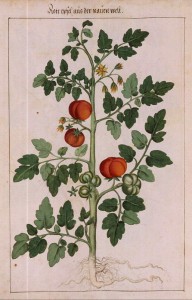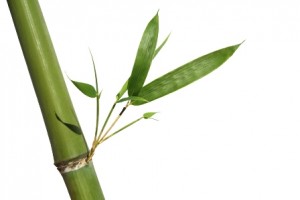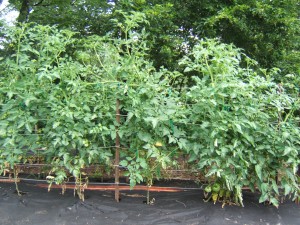It has been a couple months since I’ve posted much of anything on any of my sites, but that doesn’t mean it hasn’t been a busy, productive, and bountiful summer!
Let’s put the failure up front first: those stubborn tomato vines. After crashing down on themselves and despite several attempts to rig up support structures, there was just nothing we could do for the huge number of tomato vines we’d planted. At 8 or 10 feet in length, some of the more vital ones shot off at an incredible speed that their spindly stems cannot physically support. Further complicating things, the leaves and flowers never did too well because as soon as the sun started moving around through the season they ended up getting a bit too much shade from a nearby magnolia tree. On damp days, the leaves could barely even dry out – and we’ve definitely had our share of storms & humidity. We have plucked one or two ripe fruits from that mess of vines, but the two or three sweet tomatoes hardly seem worth the hours & resources that went in to trying to baby those plants.
Happily though, the successes are much more numerous. First off is the cayenne pepper which seems to absolutely love the contrast of blazing sun and torrential rains. Of four pepper plants seeded in pots, they’ve all flowered and begun to grow rather large cayennes. One plant in particular is an early bloomer and has already delivered a dozen thin red peppers to my spices & sauces.
The other peppers seem to be making some progress as well. Currently, there are both flowers and growing fruits on another four bells and a dozen bannana pepper plants.
In addition to lots of varied peppers, there are some other great spices thriving in the yard. Basil took well to the wetter soils that oregano didn’t seem to like, but now we’ve got quite a few dense specimens of this slightly bitter herb. I don’t know much about cooking with it yet, but when it is crushed up with blackberries & vinegar it makes an incredible salad dressing!
Ginger, garlic, and at least one onion are also getting some momentum finally. These were kind of planted later as an after-thought, but they’ve all shot off to an incredible start and we probably have at least three more months before any serious threat of frost. These three didn’t even come from seeds – they came from grocery cuttings. We’d dumped an onion out by the trash one week and when we went to go take the bins out it had sprouted. After the sprout wilted in the ground I figured it was dead, but a few weeks ago identical green tendrils shot up from what was left of the planted bulb.
Similarly, the garlic and ginger just sprouted on the counter before I ever got a chance to use them. Well, I still used them – I just cut around the parts that were ready to be planted. After leaving them a decent chunk of the starches to get started with, I managed to still cook with most of the clove and ginger root that are now providing me with completely new plants. By the way, despite the intimidating and powerful fragrance of ginger, it is actually quite a sweet and subtle flavor in cooked meals. Teamed up with the cayenne peppers, you’ve got a sweet & spicy sauce that can work with marinades, bbq sauces, soups, and of course – ginger ale.
There’s also been no shortage of long green onions. We picked up a package of scallions after Christmas since the ones we planted last year had fallen to the frost, and when they started to get soft in the fridge we planted the roots of a few we hadn’t used yet on a window side pot. For the rest of the year, we’ve had way more than we could conceivably use.
The watermelons have had it a little tough – I couldn’t quite figure out the issue but then one of them decided to jump the wall of the garden and expand out and down the sunny decline. I was just about ready to give up on them, but the biggest one has now sprouted a whole bunch of flowers that I’m hoping will turn in to a free watermelon or two.
Best of all? I feel great! I don’t remember the last time I’ve been this active since at least some summer break back in high school. These days though, I’m not sick like I was back then so I can actually enjoy it and experience the strength & endurance benefits of exercise – rather than the pain of overexertion. If there’s a downside there, it is that I’m always feeling either warm of hungry.
All in all, the situation around here has been great. It is a little bittersweet though because a lot of people don’t have it so lucky right now. Several close friends & family members have fallen on tough financial times and that is just a small reflection of what is going on in the nation at large. If you hurry, there might just be time to get the next winter crop in the ground before it is too late – and if you spend more time than money like I did, it can be a great way to boost your budget & energy levels to deal with whatever bad news the economy delivers next.


